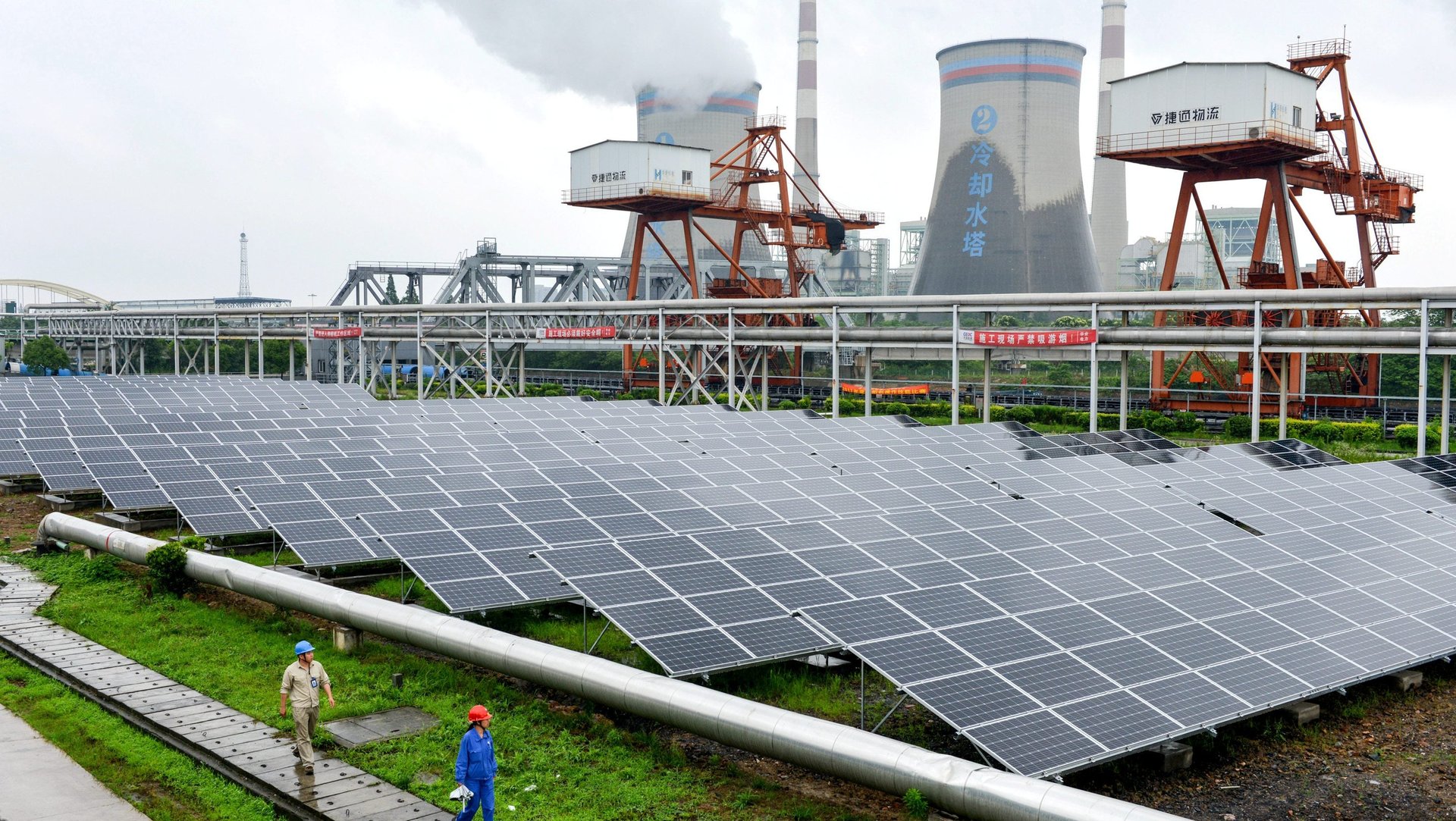The first BRICS bank project to be up and running is, symbolically, a renewable energy plant
In 2015, the BRICS nations—Brazil, Russia, India, China, and South Africa—set up a jointly funded alternative to the World Bank and the International Monetary Fund, calling it the New Development Bank. This past weekend, they watched as the first project it financed began operations.


In 2015, the BRICS nations—Brazil, Russia, India, China, and South Africa—set up a jointly funded alternative to the World Bank and the International Monetary Fund, calling it the New Development Bank. This past weekend, they watched as the first project it financed began operations.
Symbolically, the project involves solar energy, generating power from distributed rooftop installations in the Lingang industrial area of Shanghai. That’s in line with one of the bank’s founding goals: to finance sustainable development projects in the BRICS and other emerging markets.
Based in Shanghai, the NDB was established with an initial subscribed capital of $50 billion, distributed equally among BRICS members. So far it’s approved about a dozen projects.
The Lingang project was made possible by an NDB loan for 525 million yuan (about $80 million). Today it’s just getting started, with only a fraction of the eventual 100 megawatts of capacity going online Saturday (Sept. 2). When complete—in less than three years, if all goes to plan—it could reduce greenhouse emissions by up to 120,000 metric tons (132,277 tons), according to Xinhua (link in Chinese). The solar installations will be distributed over 1.5 sq km (.58 sq miles) of rooftops.
The project meshes with China’s ambition to dominate in renewable-energy technologies, and to address the problem of its smog-filled skies. China is the world’s largest market for solar panels (measured by the number of panels), and it’s home to the world’s biggest floating solar farm.